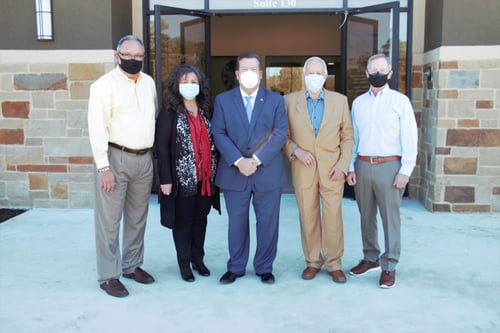Recognizing, Understanding, and Treating Common Insect Bites and Stings: Review of American Academy of Family Physicians (AAFP) Guidelines

Insect bites and stings are frequent encounters in primary care settings, often presenting with a range of symptoms from minor irritation to severe allergic reactions. Both patients and healthcare providers need to know the most common presentations in order to appropriately treat in a timely manner if necessary.
By understanding the nuances of the various common insect bites and stings, healthcare providers can effectively diagnose, treat, and educate patients on preventive measures.
In general, the clinical presentation of insect bites and stings varies depending on the type of insect involved, the individual's immune response, and any underlying medical conditions.
Common symptoms include localized pain, itching, swelling, and redness. Reactions such as fever, malaise, and swelling of the lymph nodes may occur in severe cases or in individuals with allergies. Some of the most common insect bite/sting presentations will be discussed below.
- Mosquito Bites: Mosquitoes are ever-present insects known for their itchy bites. While most mosquito bites result in minor discomfort, they can transmit serious diseases such as malaria, dengue fever, West Nile virus, and Zika virus, among others.
The AAFP guidelines recommend advising patients to use insect repellents containing DEET, picaridin, or oil of lemon eucalyptus to prevent mosquito bites. Additionally, eliminating standing water around the home is vitally important to reduce mosquito breeding sites. - Bee and Wasp Stings: Bee and wasp stings can cause localized pain, swelling, and redness. However, in individuals with allergies, they may lead to severe reactions, including anaphylaxis (low blood pressure, shortness of breath, or even shock).
According to AAFP guidelines, prompt administration of epinephrine is crucial in managing anaphylaxis due to insect stings. Clinicians should also prescribe self-injectable epinephrine devices to patients at risk of severe allergic reactions and provide appropriate education on their use.
- Flea Bites: Flea bites often present as small, red bumps with intense itching and can transmit diseases such as plague and typhus. Fleas are commonly associated with pets but can also bite humans, causing itchy red bumps.
AAFP guidelines emphasize the importance of treating pets for fleas to prevent infestations in the household. Additionally, it is important to wash bedding and vacuum carpets regularly to eliminate flea eggs and larvae. Creams and ointments and over-the-counter allergy medications may provide symptomatic relief for flea bites.
- Tick Bites: Ticks can transmit various infectious diseases, including Lyme disease and Rocky Mountain spotted fever. AAFP guidelines recommend prompt removal of ticks using fine-tipped tweezers, grasping the tick as close to the skin's surface as possible, and pulling upward with steady, even pressure. If you are outside a lot, you will want to check your body regularly for ticks, particularly after outdoor activities in wooded or grassy areas, and use insect repellents containing DEET for prevention.
- Bedbug Bites: Bedbugs are nocturnal insects that feed on human blood, causing itchy, red welts. They are commonly found in areas with high human activity, such as hotels and dormitories. AAFP guidelines recommend a multi-step approach to managing bedbug infestations, including thorough cleaning of infested areas, laundering bedding and clothing in hot water, and using insecticidal sprays or powders. Although bedbugs are not known to transmit diseases dealing with them can result in psychological distress or anxiety, and your family physician can help to provide appropriate support and resources.
The management of insect bites and stings focuses on alleviating symptoms, preventing complications, and educating patients on preventive measures. For non-allergic reactions, treatments can include calamine lotion, hydrocortisone cream, and antihistamines can help relieve itching and inflammation.
Whereas if an allergic reaction is present or suspected, your doctor may recommend oral antihistamines such as loratadine (Claritin) and cetirizine (Zyrtec) to provide symptomatic relief for mild allergic reactions. Individuals with a history of severe allergic reactions should always have and use an epinephrine auto-injector and proceed to receive prompt medical attention. If you have had an anaphylactic reaction, your doctor will provide further instructions.
Of course, it is best to avoid being bitten in the first place. Using insect repellents, wearing protective clothing, and avoiding known insect habitats can reduce the risk of bites and stings.
When in doubt about the severity of symptoms, do not hesitate to seek appropriate medical care.
Dr. Kyle Johnson is a resident physician who sees patients of all ages and provides obstetrical services at Lone Star Family Health Center, a non-profit 501©3 Federally Qualified Health Center operating facilities in Conroe, Spring, Willis, Grangerland, and Huntsville, and serving as home to a fully integrated Family Medicine Residency Program to increase the number of Family Medicine physicians for Texas and our community.



